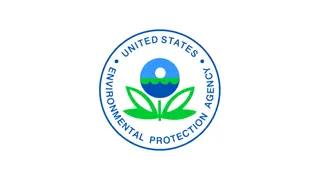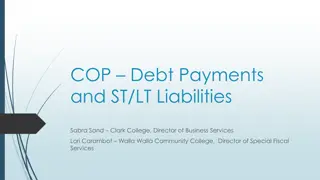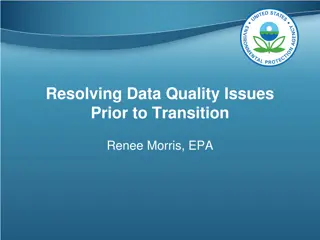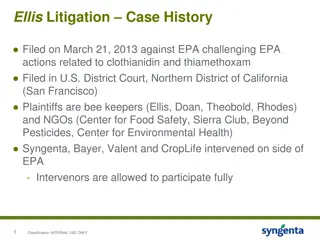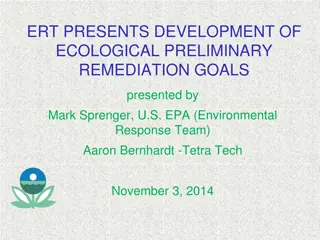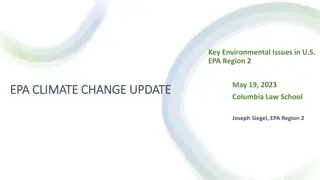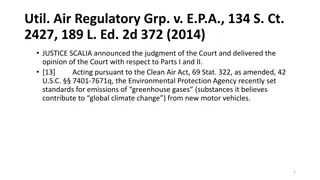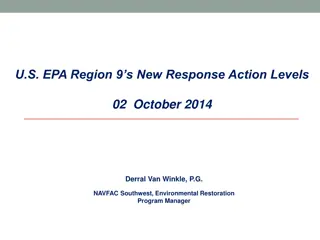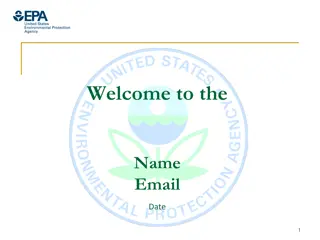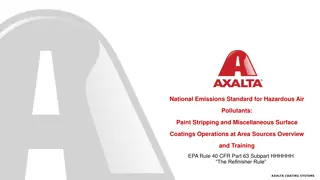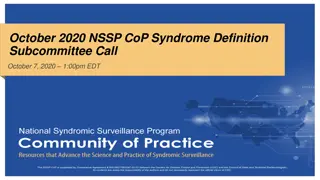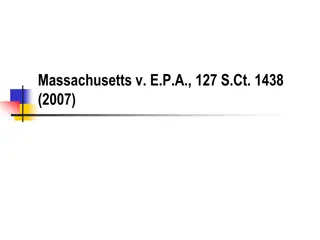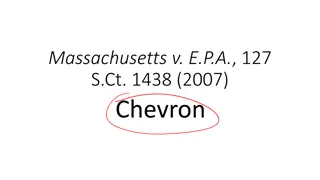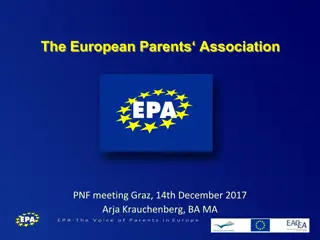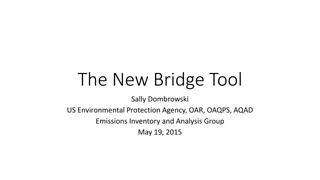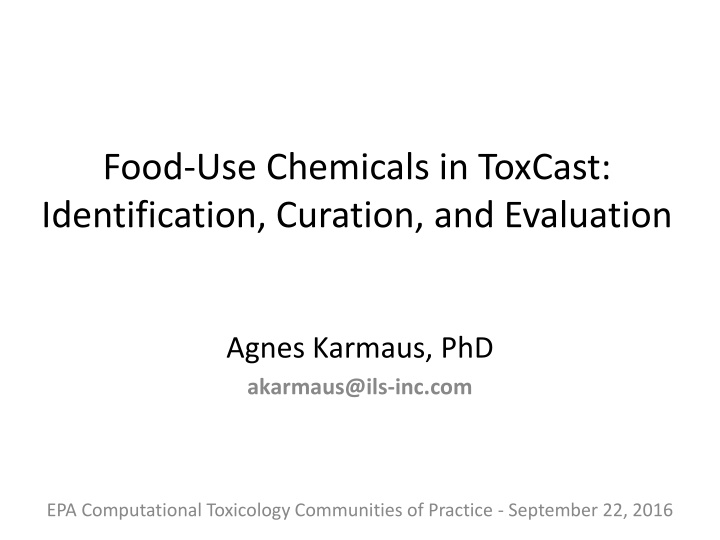
Identifying Food-Use Chemicals: ToxCast Evaluation & Curation
Dive into the world of chemicals used in food production, as Agnes Karmaus leads the effort to compile an inventory, evaluate bioactivity in ToxCast, and categorize chemicals based on use. Explore the vast landscape of food-relevant chemicals and their implications.
Download Presentation

Please find below an Image/Link to download the presentation.
The content on the website is provided AS IS for your information and personal use only. It may not be sold, licensed, or shared on other websites without obtaining consent from the author. If you encounter any issues during the download, it is possible that the publisher has removed the file from their server.
You are allowed to download the files provided on this website for personal or commercial use, subject to the condition that they are used lawfully. All files are the property of their respective owners.
The content on the website is provided AS IS for your information and personal use only. It may not be sold, licensed, or shared on other websites without obtaining consent from the author.
E N D
Presentation Transcript
Food-Use Chemicals in ToxCast: Identification, Curation, and Evaluation Agnes Karmaus, PhD akarmaus@ils-inc.com EPA Computational Toxicology Communities of Practice - September 22, 2016
Goals Compile a comprehensive inventory of food-use chemicals in the USA Evaluate the chemical landscape Evaluate bioactivity in ToxCast
Overview 1. Identification of food-relevant chemicals Compilation of a comprehensive inventory Cheminformatics evaluation of chemical diversity Categorization of chemicals based on use 2. Food-relevant chemicals in ToxCast Coverage of food-use chemicals in ToxCast Activity of food-use chemicals across ToxCast Cytotoxicity elicited by food-use chemicals
Chemical Inventories Inventory Source Entries in Inventory CASRN in Inventory CASRN in Use Category CASRN in ToxCast Use Category FDA EAFUS FDA SCOGS FDA GRAS Notices FEMA GRAS FDA Effective FCS FDA Indirect in FCS FDA TOR Alan Wood Pesticides 3968 378 603 2796 1205 3229 50 3277 320 349 2659 715 2555 56 Direct Food Additives 3888 Chemicals were grouped into Use Categories based on the database of origin 616 Food Contact Substances 3039 371 1813 1808 Pesticides 1732 543 TOTAL 14,042 11,733 8,659 1530
Chemical Inventories Chemicals were restricted to only CASRN in Use Category CASRN in ToxCast Inventory Source one use category, with the hierarchy: Entries in Inventory CASRN in Inventory Use Category FDA EAFUS FDA SCOGS FDA GRAS Notices FEMA GRAS FDA Effective FCS FDA Indirect in FCS FDA TOR Alan Wood Pesticides 3968 378 603 2796 1205 3229 50 3277 320 349 2659 715 2555 56 Direct Food Additives 3888 616 direct food additive food contact substance pesticide Food Contact Substances 3039 371 Pesticides 1732 543 1813 1808 8,659 1,530 TOTAL 14,042 11,733
Chemical Fingerprinting Two sources for substructure and physchem property descriptors (fingerprint bits) used: 881 PubChem fingerprints 166 MACCS fingerprints Example of PubChem Fingerprints:
Chemical Fingerprinting Fingerprint (substructure/physchem bits) 1 2 3 4 5 . . . . . . . . . . . . Chem 1 1 0 0 0 1 0 0 1 0 1 1 0 0 0 0 0 0 Chemicals in Inventory Chem 2 1 0 0 1 1 0 0 0 0 0 0 0 1 0 1 0 0 Chem 3 1 0 0 0 0 0 0 0 1 1 0 0 1 0 0 0 0 Chem 4 0 0 0 0 0 0 0 0 0 1 0 0 0 1 0 0 0 Chem 5 1 0 0 0 0 0 0 0 0 0 0 1 0 0 0 1 1 . . . .
Self Organizing Map (SOM) Algorithm trained using unsupervised learning where samples are grouped based on similarity into bins. Bins are then laid out so that those most alike are nearest one another. Number of bins is defined by the user Similarity was based on chemical fingerprints
SOM Results for Food-Use Chemicals 20 x 24 bin layout used, aiming for an average of 10 chemicals per bin
SOM Results for Food-Use Chemicals Direct Food Additives 12 bins had zero chemicals (white) Highlighted to visualize the proportion of chemicals in the bin that are direct food additives
SOM Results for Food-Use Chemicals Proportion of chemicals per bin obtained from direct additive vs. pesticide resource Direct Food Additives Food Contact Substances Pesticides Clear separation between bins comprised solely of direct food additives versus pesticides
SOM Results for Food-Use Chemicals Direct Food Additives Food Contact Substances Pesticides
ToxCast Activity for Food-Use Chemicals
Evaluating Cytotoxicity Across ToxCast All chemicals were evaluated in 14 of 35 cytotoxicity assays, Chemicals had to elicit cytotoxicity in 3 assays for calculation 10% Direct Additives 29% Food Contact Substances 40% Pesticides
Summary of Chemical Inventory so far Identified food-relevant chemicals by mining publicly available databases Chemicals were categorized based on database, assuming comparable usage Observations: Some chemicals from databases are no longer allowed for use in food Some chemicals have multiple uses or were mis- classified (ie. GRAS chemicals)
Manual Curation of Food-Use Chemicals in ToxCast Focus on chemicals that are of relevance for food in current-day US Eliminate chemicals that are no longer approved for food-use in the US Eliminate chemicals that are only foreign use and have no importation tolerance Confirm categorization based on use and exposure likelihood
Refining ToxCast Food-Relevant Chemical Categorization former 616 direct additives category non-food (28 chemicals) pesticide residue (39 chemicals) Manual curation evaluated: - Current registration or tolerance status in the USA indirect additive (54 chemicals) - Exposure likelihood from food in the USA direct additive (550 chemicals) - Allowed chemicals in >1 category
Manual Curation Results formerly 616 direct additives formerly 371 food contact substances formerly 543 pesticides non-food (28 chemicals) direct additive (6 chemicals) indirect additive (4 chemicals) pesticide residue (39 chemicals) non-food (72 chemicals) non-food (219 chemicals) indirect additive (54 chemicals) pesticide residue (321 chemicals) pesticide residue (46 chemicals) direct additive (550 chemicals) indirect additive (281 chemicals) Refined: 556 direct additives Refined: 339 indirect additives Refined: 406 pesticides & residues 1,211 Manually Curated Food-Use Chemicals in ToxCast
Curated Chemical Categories: Cytotoxicity Across ToxCast
Summary Identified 8,659 unique food-use chemicals Chemical fingerprints confirm grouping based on use ToxCast includes 1,211 food-use chemicals after manual curation to confirm current-day use in the USA 556 Direct food additives 339 Indirect food additives 406 Pesticides/residues Direct food additives are overall less cytotoxic compared to indirect food additives and pesticides/residues
Next Steps Compare food-use chemical inventory to chemicals identified from the Chemcal and Product Categories (CPCat) Database
Acknowledgements ILSI North America Technical Committee for Food and Chemical Safety Alison Kretser and Dr. Mansi Krishan Dr. Tom Trautman (retired, General Mills) Dr. Lori Fix (Unilever) EPA/NCCT Dr. Matt Martin, Dr. Keith Houck, Dayne Filer Karmaus et al. 2016. Food Chem Tox. 92: 188-196.




